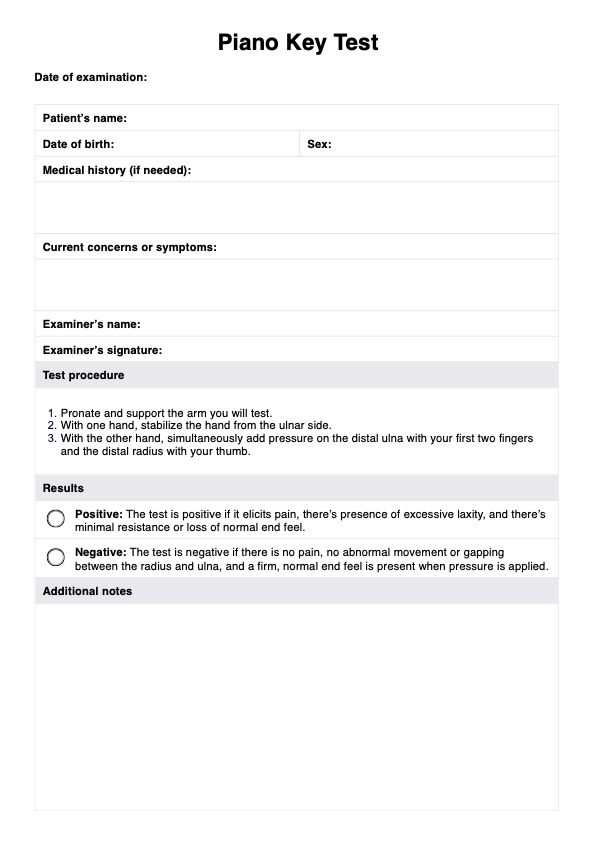This test is recommended for patients presenting with symptoms of distal radioulnar joint stability or as a diagnostic tool following wrist trauma or surgical intervention.

Piano Key Test
Assess the stability of the distal radio ulnar joint (DRUJ) with a Piano Key Test. Learn more about the test and how to interpret the results with our guide.
Piano Key Test Template
Commonly asked questions
The test provides valuable insights into the structural integrity of the distal radioulnar joint and the triangular fibrocartilage complex, aiding in accurately diagnosing and managing related conditions.
To perform the Piano Key Test, the clinician should have the patient seated with the forearm placed on a stable surface. The clinician will then firmly stabilize the patient’s forearm with one hand while using the other hand to apply pressure to the distal ulna, pushing it dorsally. A positive test is indicated by excessive dorsal displacement of the ulnar head and may cause pain or discomfort for the patient.
EHR and practice management software
Get started for free
*No credit card required
Free
$0/usd
Unlimited clients
Telehealth
1GB of storage
Client portal text
Automated billing and online payments











